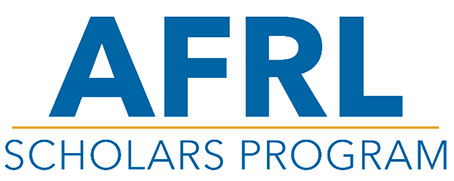Micro-physics of Electrospray Thrusters
Overview
Qualifications
Organization
Overview
Electrospray thrusters using ionic liquid propellants are next-generation propulsion systems that are well-suited for in-space propulsion for small spacecraft. These systems provide unique high-density, low power propulsion capabilities and are envisioned in such missions as the upcoming gravity wave observatory mission (LISA, NASA). The physics occurring at the emission sites of high performance electrospray systems is still ripe for experimental and theoretical exploration designed to improve our understanding of the operation of the devices. In this project, the selected student will either undertake experimental or theoretical approaches to further the understanding of the plume of ions emitted from either (or both) a capillary or externally wetted emitter. Theoretical methods, if the student’s primary interest, might include the use of quantum mechanical and molecular dynamics approaches to the prediction of emitted ion clusters, the lifetime of the clusters, prediction of the plume shape and other observables, modelling in support of experimental data or other related work. Students focused primarily on experimental investigations will utilize mass spectrometry, current-sensing and mass-sensing tools to examine the plume generated from various different propellants or emitter types at relevant volumetric flow rates. Analysis of the experimental measurements will yield insights into trends among the different propellants and improve understanding of the microphysics occurring post-emission in a laboratory thruster.
Organization: Scholars
working and learning something new every day
Benjamin Douglas Prince
Postdoc

Benjamin Douglas Prince
We use experimental and theoretical tools to examine a broad range of hyperthermal processes including 1) interactions between atmospheric species and surfaces, 2) chemical and electric thruster plumes with atmospheric species, 3) interactions occurring in the plumes of next-generation propulsion technologies and 4) fundamental ion-neutral collision processes. Typical experimental techniques include guided-ion beam tandem mass spectrometry, quadrupole and time-of-flight mass spectrometry, optical emission spectroscopy/spectrometry, laser-induced fluorescence detection and measurement of ion conversion efficiency for atmospheric sensors. The laboratory houses 5 different high vacuum experimental systems and has access to high-performance computing resources for theoretical treatment of experimental results. Areas of current particular interest are experimentation relevant to the re-entry vehicle environment where electronic, vibrational and rotational excited states are common and experimental data is sparse, development and understanding of the microphysics associated with ionic liquid propelled electrospray thruster technology, quantification of processes leading to thruster signatures of in-space propulsion systems, and fundamental charge-exchange physics with an emphasis on quantification of scattering angles, energy transfer, and branching ratios.
Qualifications and Eligibility
Below is a summary of the desired background for the position, and any general requirements. Additional detail may be found in the application.
About the partner
Universities Space Research Association (USRA) administers a three-pronged approach to strengthening the science, technology, engineering, and mathematics (STEM) workforce pipeline that includes: the AFRL Scholars Program, AFRL Scholars Professionals, and the University Research and Engagement Program (UREP). This portfolio of enriching programs aligns directly with the Federal STEM Strategy and Department of Defense (DoD) STEM mission for the U.S. Department of the Air Force by offering immersive project-based learning opportunities for students and postdoctoral fellows.

Media Inquiries
afrl.pa.inquiry@us.af.milBusiness Inquiries
afsbirsttr-info@us.af.milHigher Education Inquiries
collaborate@us.af.milCopyright © 2025 The Air Force Research Laboratory. All rights reserved.
